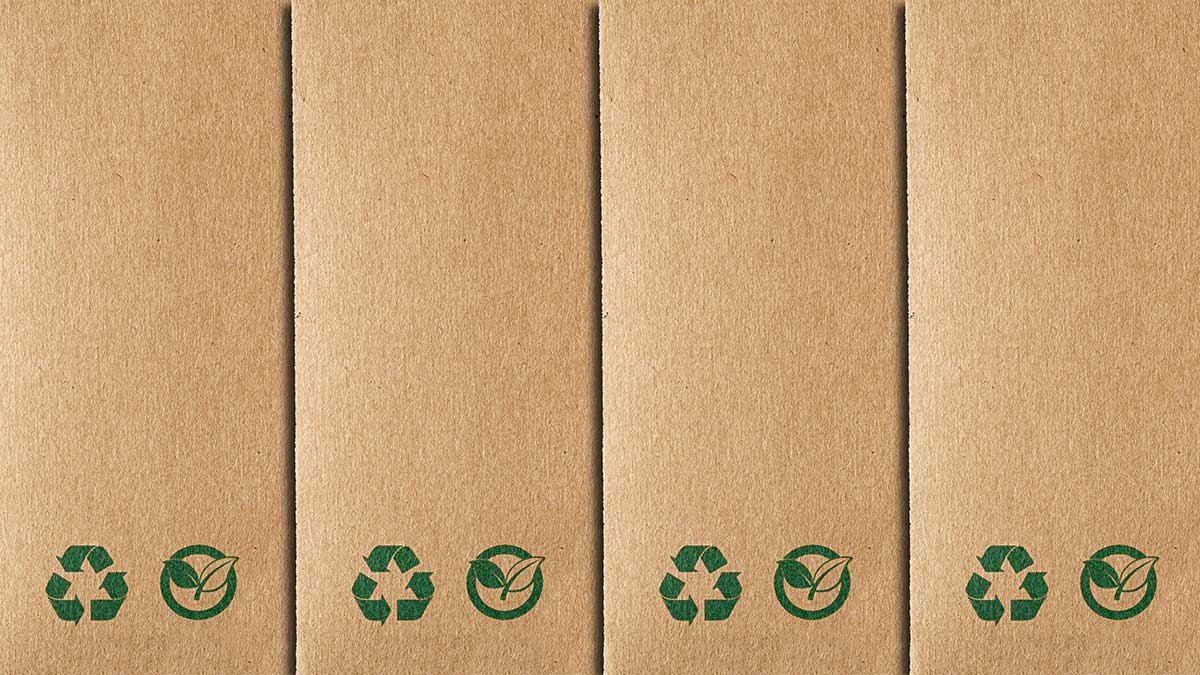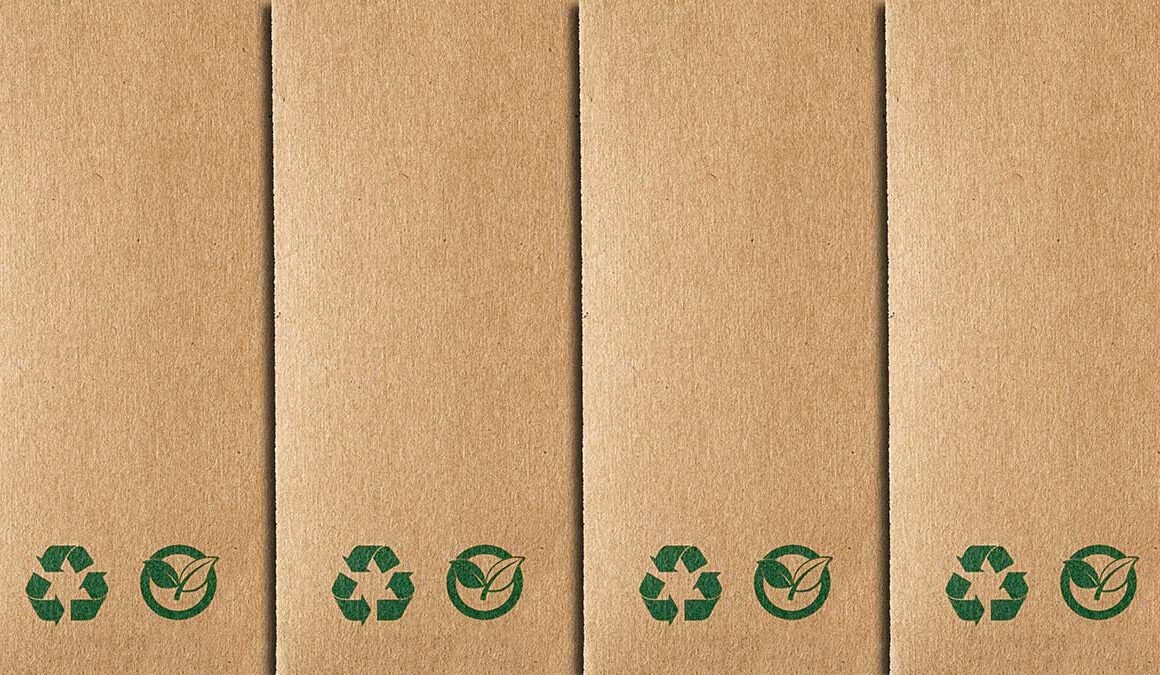Guest Perspective: Embracing the Circular Economy Means Transforming Food Packaging for a Sustainable Future

Embracing the circular economy is vitally important for all industries, especially in the context of food packaging. Using food packaging that helps create a circular economy can transform the food packaging industry into a more sustainable and efficient system.
Although there can be many challenges when implementing more sustainable packaging, there are now innovative materials that the food packaging industry is using to revolutionize sustainable practices and embrace the circular economy. While adopting new technology will always involve some investment, the key benefits of investing in a circular economy are the long-term economic benefit and the potential for real cost savings through the entire supply chain. Benefits include:
- Reduced resource consumption: Designing products that last longer and are recyclable leads to cost savings as materials and components can be reused instead of purchasing new ones.
- Reduced waste disposal cost: Circular economy practices minimize the amount of waste, which means savings on waste disposal costs and potentially additional revenue if recycled materials can be sold.
- Enhanced brand reputation: There is an increasing demand for sustainable products, so embracing the circular economy can enhance brand reputation and attract new environmentally conscious customers.
The current lack of recycling initiatives is a key barrier to adopting a circular economy. However, embracing this model can overcome this challenge and simultaneously create new, local career and entrepreneurial opportunities in recycling. This approach addresses the initial hurdle and leverages it as a stepping stone towards innovation and sustainable practices.
Another challenge has traditionally been a lack of consumer awareness of sustainable food packaging. However, this is changing rapidly, with many consumers aware of the environmental impact of packaging materials and the benefits of choosing more sustainable options. To fully embrace the circular economy, there will be much collaboration required among various stakeholders to introduce and implement effective, sustainable strategies such as the Extended Producer Responsibility (EPR) program.
A sustainable future is possible if we address the existing challenges, explore innovative materials, and implement a circular food packaging system.
Innovation Required
Truly achieving a sustainable future requires more than acknowledging current challenges; it demands a multifaceted approach that encompasses the exploration of innovative materials and the adoption of a circular food packaging system. This holistic strategy extends beyond the establishment of recycling infrastructure, which is crucial but insufficient.
For real transformation to take place, we must prioritize designing packaging materials that are inherently recyclable or compostable. This shift necessitates a reimagining of product life cycles, ensuring that materials can be easily returned to the earth or repurposed into new products without environmental degradation.
Developing incentive programs is critical for encouraging both businesses and consumers to participate actively in recycling efforts. These programs can vary from financial rewards for returning packaging to discounts for choosing sustainable options, fostering a culture of responsibility and environmental stewardship.
Lastly, the emphasis on local solutions is pivotal in minimizing transportation impacts, one of the often overlooked aspects of packaging sustainability. By localizing the production and recycling of food packaging, we can significantly reduce the carbon footprint associated with transportation, making the journey toward sustainability more achievable and impactful.
Together, these elements—designing for recyclability and compostability, incentive programs, and local solutions—form the backbone of a circular food packaging system that addresses the immediate challenges and paves the way for a truly sustainable future.
The Crucial Role of Circular Economy in Modern Food Packaging
As with any industry, food packagers must balance economics, convenience, and sustainability. The circular economy offers solutions to these challenges.
In the food packaging industry, achieving a balance between economics, convenience, and sustainability is paramount. The circular economy framework presents viable solutions to these challenges, notably by reducing the ‘green premium’—the additional cost often associated with sustainable practices.
While skepticism remains regarding the expansion of recycling options due to observed pullbacks in brand support for collection programs, the potential for growth in this area cannot be dismissed outright. Increased recycling capabilities and innovations in packaging design could enhance the availability of sustainable options, decreasing the green premium over time.
Currently, single-use plastic food packaging significantly impacts the environment, with 84% of plastic waste sent to landfills in Australia. As with all sustainable alternatives, increasing consumer awareness is a crucial factor. Although shoppers understand that some materials have a negative environmental impact, educating them about the benefits of sustainable options can increase demand and encourage investment in developing more innovative sustainable packaging materials.
Addressing food waste is crucial for resource efficiency and sustainability. Food waste contributes to greenhouse gas emissions and represents a loss of resources and money. Innovative solutions, like intelligent packaging and surplus food apps, can reduce waste and create more efficient packaging and distribution systems.
Embracing a holistic approach to food packaging demands comprehensive consideration of the packaging’s entire life cycle—from material sourcing to disposal. Central to this strategy is the prioritization of renewable materials, which significantly reduces the ecological footprint of packaging. These materials, derived from sustainable sources, are designed to have minimal impact on the planet.
It is crucial to address food waste through innovative packaging solutions. Packaging that extends the shelf life of food or allows for easier portion control can significantly reduce the amount of food discarded. This not only conserves resources but also diminishes the environmental damage associated with food production and disposal.
The journey towards sustainability is further advanced by amplifying the roles of reuse and recycling within the industry. A shift towards packaging designed for multiple uses, or easily recycled, plays a crucial role in reducing landfill waste. By developing and implementing effective collection and processing systems, we can ensure that more packaging materials are reclaimed and repurposed.
Implementing these steps requires a collaborative effort across the entire supply chain—from material producers to consumers. By integrating renewable materials, minimizing food waste, and enhancing reuse and recycling efforts, the food packaging industry can significantly contribute to more sustainable and efficient resource use, effectively closing the loop in the packaging lifecycle.
Circular Design Principles: Reshaping the Landscape of Food Packaging
Circular design principles are changing how we approach food packaging, including integrating various kinds of sustainable food packaging options. These innovative solutions range from using renewable materials to compostable and recyclable packaging options, reflecting a commitment to environmental stewardship. Embracing circular design can promote sustainable materials while minimizing waste and offering economic benefits.
The design process behind sustainable packaging is crucial as true re-usability is key for any effective circular design system. Whether a product that can be continuously reused or something made from material like recycled polyethylene (rPET), which can be continuously recycled without losing quality, Food packaging should always encourage reuse wherever possible. By adopting modern recyclable and reusable materials, the carbon footprint of the food packaging industry can be massively reduced, thereby promoting a more sustainable future.
Using sustainable materials and innovation in the production process is a large contributor to creating a circular economy. Embracing circular design is all about closing the loop through recycling and composting. This is essential for modern businesses and consumers to protect the environment and its resources.
Sustainable Packaging: How to Make the Right Choices
Currently, the best way for consumers to identify the sustainability of food packaging is through correct labeling. Manufacturers investing in research and development to produce sustainable packaging will label the packaging to reflect this as a selling point.
Identifying sustainable food packaging relies on understanding credible labels. Trustworthy certifications include the Forest Stewardship Council (FSC) for paper and the Biodegradable Products Institute (BPI) for compostable products. The recyclability of plastics can be determined by the resin identification code (RIC), though local recycling capabilities must also be considered. Consumers should be cautious of vague terms like “recyclable,” which lack standardization. Instead, focus on specific labels that indicate third-party verification, such as products certified by the Cradle to Cradle Products Innovation Institute. Educating oneself on these labels can lead to more informed and sustainable choices.
Packaging certifications (such as BPI, FSC, and ISCC) and standard benchmarks can be good indicators of the environmental impact of certain food packaging. They can also be used to track the life cycle (known as start-of-life and end-of-life). These factors are used to analyze the total sustainability of a product and depend on the renewable nature of the materials, energy consumption used in production, carbon emissions, and recyclability or composability at its end-of-life.
Innovations Shaping Tomorrow: The Role of Technology in Circular Packaging
The drive toward sustainability in the packaging industry hinges on concrete innovations and the active participation of key players—namely, Consumer Packaged Goods (CPG) companies, who stand as the primary innovators. These entities are pivotal in integrating new material technologies, enhancing recycling processes, and employing smart packaging solutions that push the industry toward a circular economy.
Sustainable materials are just the starting point. CPG companies must invest in bioplastics and other recyclable materials and ensure these alternatives are compatible with advanced recycling technologies. This involves a dual commitment to developing durable, recyclable, or compostable materials, reducing the reliance on virgin resources.
Smart packaging with QR codes and RFID tags offers more than just tracking capabilities. It’s about establishing a robust infrastructure that utilizes these technologies to manage the lifecycle of packaging. Innovators must work towards systems that leverage data from these tags to streamline recycling processes, reduce waste, and even guide consumer behavior towards sustainability.
In the realm of supply chain optimization, the implementation of AI and data analytics by CPG companies is crucial for minimizing environmental impact. This goes beyond reducing costs—it’s about enhancing efficiency at every stage, from raw material sourcing to product distribution, ensuring minimal waste and energy use.
Consumer engagement is another critical area. Innovators should not only focus on technological and material advancements but also on initiatives that encourage responsible consumer behavior. This includes clear labeling, education on recycling practices, and incentives for choosing sustainable options.
The key for readers looking to support sustainability is to identify and back brands that transparently demonstrate their commitment to these innovations. Look for products with clear sustainability certifications, participate in recycling programs, and favor companies that invest in smart packaging and supply chain improvements.
About The Author
Felicity Kelly is the Head of Sustainability at Bunzl Australia & New Zealand. She assists organizations in enhancing their sustainability performance and reputation, as well as managing their entire value chain through stakeholder engagement, communication, risk management, problem-solving, strategy development, and execution. Felicity holds a Master’s degree in Corporate Environmental and Sustainability Management from Monash University. She has extensive experience working across various sectors, primarily in Fast-Moving Consumer Goods (FMCG) and logistics.


